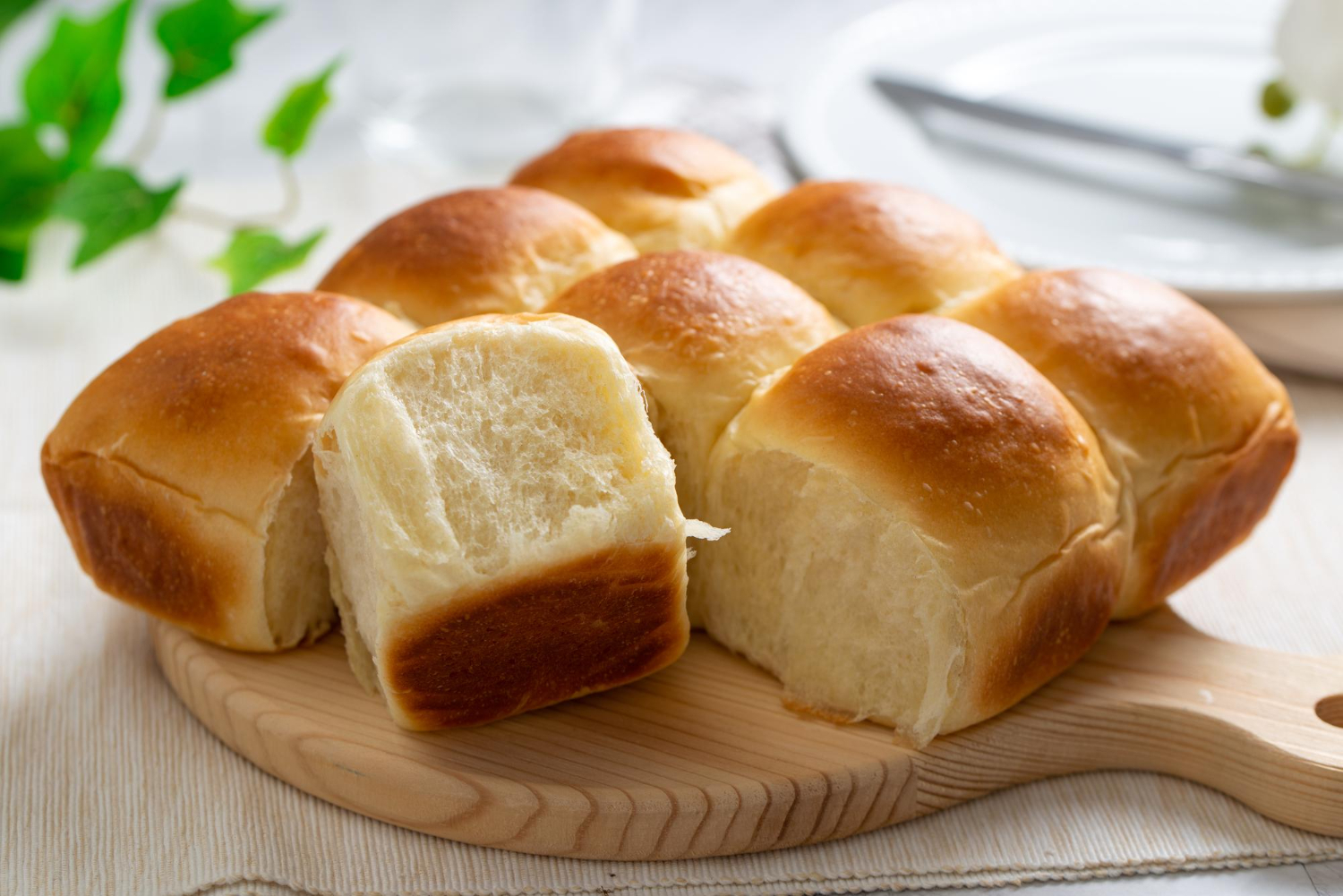Dinner rolls, those delightful, fluffy bundles of joy, have long graced dining tables worldwide, from crusty baguettes in France to soft, buttery rolls in the U.S. Renowned for their comfort and hospitality, these small bread pieces have the charm to elevate a simple meal into a feast, adding a special warmth to each bite. However, in our health-conscious era, it’s crucial to examine the foods we cherish, particularly focusing on ‘Carbs in Dinner Rolls.’ The carbohydrate content in these bread rolls plays a significant role in our diets, affecting everything from daily nutrition to specific health concerns like diabetes management or overall dietary balance.
This culinary journey into the ‘Carbohydrate Levels in Dinner Bread’ is not about renouncing our beloved traditional foods; instead, it’s about striking a balance. We aim to understand the nutritional composition of dinner rolls, focusing on ‘Carbs in Bread Rolls,’ and how to incorporate them into a healthy eating regimen. In this exploration, we’ll unravel the intricacies of the carbohydrate content in dinner rolls, offering insights for those who wish to continue savoring these favorites while making mindful, informed dietary choices.
The Composition of a Dinner Roll
At the heart of every dinner roll lies a simple combination of ingredients – flour, yeast, sugar, salt, and often, butter or milk to enrich the flavor and texture. These ingredients, while basic, are the building blocks of the carbohydrate content in dinner rolls.
Flour, the primary ingredient, is a significant source of carbohydrates. The type of flour used can greatly influence the nutritional profile of the bread. For instance, white flour, commonly used in traditional dinner rolls, is high in carbs but low in fiber. On the other hand, whole wheat flour, which is becoming increasingly popular in health-oriented recipes, contains more fiber and has a lower glycemic index, making it a healthier choice. When considering the ‘Carbs in Dinner Roll,’ it’s important to look at the types of flour used.
Yeast, another key ingredient, is essential for the fermentation process that makes bread rise. While it doesn’t contribute significantly to the carb content, it plays a crucial role in developing the bread’s flavor and texture. Sugar, often added in small amounts, provides food for the yeast and adds to the carb count. Salt, used for flavor, has no carbs but is vital for bread’s overall taste.
When comparing whole wheat vs. white dinner rolls, the former typically contains more fiber and nutrients, making them a better choice for those watching their carb intake. The fiber in whole wheat helps slow down the absorption of carbohydrates, preventing spikes in blood sugar levels.
Carbs and Your Diet: A Balanced View
Carbohydrates are a vital component of a balanced diet, providing the body with the energy it needs to function correctly. However, not all carbs are created equal. They are broadly categorized into two types: simple and complex carbohydrates.
Simple carbohydrates, found in foods like white bread and sugary snacks, are quickly absorbed by the body, leading to rapid spikes in blood sugar levels. Conversely, complex carbohydrates, like those in whole grains and vegetables, are absorbed more slowly, providing a steady energy release and keeping you fuller for longer.
The carbs in dinner rolls, especially those made from refined white flour, fall mostly into the simple carbohydrates category. While they offer a quick energy boost, they lack the nutritional benefits of their complex counterparts. Therefore, it’s essential to consider how these fit into your daily carbohydrate intake recommendations.
For a balanced diet, it’s advised to limit the intake of simple carbs and opt for complex carbs that offer more nutritional benefits. However, this doesn’t mean you need to completely eliminate dinner rolls from your diet. Instead, consider choosing dinner rolls made from whole grains or those that incorporate additional fiber and nutrients. By doing so, you can enjoy your favorite bread while aligning with the principles of healthy eating and maintaining a balanced carbohydrate intake.
Healthier Alternatives to Traditional Dinner Rolls
For those mindful of their carb intake, the quest for the perfect dinner roll need not end. Enter the world of low-carb and gluten-free dinner rolls, where alternative flours and ingredients come to the rescue. Almond flour, for example, is a popular low-carb substitute that offers a nutty flavor and dense texture, making it ideal for a satisfying dinner roll. Coconut flour is another excellent option; it’s high in fiber and low in carbs, though it requires more moisture, so recipes often call for additional eggs or liquid.
For a low-carb dinner roll recipe, try combining almond flour with ground flaxseed, baking powder, eggs, and butter. The result is a roll that’s not only low in carbs but also rich in healthy fats and fiber. For those avoiding gluten, a mixture of rice flour and tapioca starch can mimic the texture of traditional bread quite well.
Another approach is to rethink the dinner roll concept altogether. Consider substitutes like baked cauliflower tots or cloud bread, which is made from whipped egg whites, cream cheese, and a touch of cream of tartar. These options are not only low in carbs but also add an element of creativity to the meal.
Remember, these “healthy bread substitutes” are not just for those on specific diets; they can be a delicious change of pace for anyone looking to reduce their carb intake. So, whether you’re following a low-carb, keto, or gluten-free diet, there are plenty of options to keep those beloved dinner rolls on your menu.
Incorporating Dinner Rolls into a Healthy Diet
Enjoying dinner rolls as part of a balanced diet is all about portion control and pairing. A good rule of thumb for portion size is to limit yourself to one medium-sized roll per meal. This way, you can satisfy your craving without overindulging.
Pairing your dinner roll with high-fiber, protein-rich foods can also help balance your meal. For instance, a dinner roll alongside a salad packed with leafy greens or a protein-rich soup can create a more nutritionally complete and satisfying meal. This combination helps slow down the absorption of carbs and keeps you feeling full longer.
The concept of mindful eating plays a significant role here. It involves paying attention to what you eat, savoring each bite, and listening to your body’s hunger and fullness signals. By eating mindfully, you’re more likely to enjoy your dinner roll without going overboard.
In summary, you don’t have to give up dinner rolls to eat healthily. Instead, focus on “healthy portion sizes” and complement them with nutrient-rich foods. This approach allows you to enjoy your favorite bread as part of “balanced meals with bread,” keeping your diet varied and enjoyable. Understanding ‘Carbs in Dinner Roll’ is key to enjoying them as part of a balanced diet
FAQs About Carbs in Dinner Rolls
Q: How many carbs are in a dinner roll?
A: The carbohydrate content in a dinner roll can vary, but a standard white dinner roll typically contains about 15-20 grams of carbs. Whole wheat rolls might have a slightly lower net carb count due to their higher fiber content.
Q: Can I eat dinner rolls on a low-carb diet?
A: Yes, but you’ll need to choose low-carb alternatives or limit your portion size. Low-carb dinner rolls made with almond or coconut flour are great options that typically contain only 2-5 grams of carbs per serving.
Q: How should I store healthier dinner rolls to maintain freshness?
A: Store them in an airtight container at room temperature for up to 2-3 days. For longer storage, freeze them in a sealed bag, and reheat as needed.
Q: What are some healthier dinner roll options?
A: Look for rolls made with whole grains like whole wheat or oats, as they offer more fiber. Alternatively, try low-carb or gluten-free versions made with alternative flours.
Q: Are there any easy swaps to make dinner rolls healthier?
A: Yes, try substituting a portion of white flour with whole wheat flour in your recipe, or add ingredients like oats or seeds to increase the fiber content.
Have more questions about “carbohydrate questions” in dinner rolls? Feel free to ask in the comments section below!
Wrapping Up: Your Balanced Bread Journey
As we round off our exploration of “carbs in dinner rolls,” it’s clear that this staple can fit into various dietary preferences and health-conscious choices. The journey through understanding and adapting the carb content in these beloved rolls opens up a world of culinary creativity and mindfulness.
Embracing low-carb alternatives, experimenting with nutrient-rich ingredients, and understanding portion control are key steps to enjoying dinner rolls in a healthful way. Whether you’re venturing into the realm of homemade low-carb rolls or simply becoming more mindful of your intake, each step is a valuable part of your balanced diet.
We encourage you to embark on this “healthy eating journey” with enthusiasm. Explore, experiment, and share your experiences with these bread variations. Your insights and discoveries can inspire others to find joy in adapting classic favorites to suit their dietary needs. Join the conversation below and let us know your favorite ways to enjoy dinner rolls while keeping an eye on health and nutrition.












